shells of Heinz Isler
Structural assessment of remodeled shells of Heinz Isler
Abtin Baghdadi1, Mahmoud Heristchian2, Harald Kloft1
1Department of Architecture Civil Engineering and Environmental Sciences, Institute of Structural Design, TU Braunschweig, Braunschweig, Germany
2Department of civil engineering, South Tehran Branch, Islamic Azad University, Tehran, Iran
Heinz Isler as the most famous contemporary shell designer has widely employed physical pre-modelling techniques for construction of many concrete shell structures.
Through the physical approach to optimal form finding, Isler accomplished shell structures with robust performance. It would be interesting and beneficial to re-assess Isler’s shells, hence, this article attempts to study the structural performance of eight notable shells of Isler.
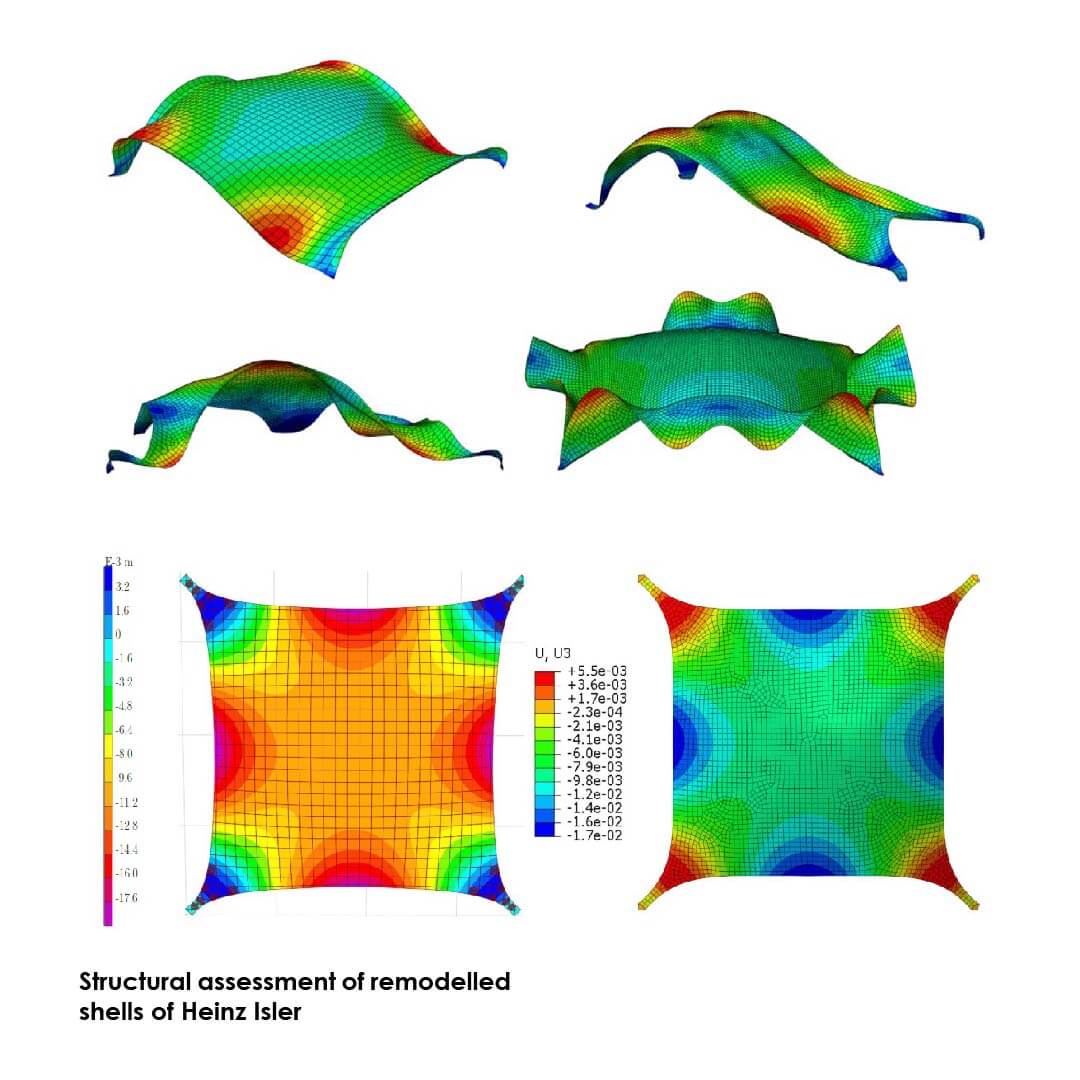 Through reverse engineering and by the assistance of Rhino, MATLAB and Grasshopper, the precise geometry of Isler’s selected shells were modelled for the finite element analysis under their self-weight.
Through reverse engineering and by the assistance of Rhino, MATLAB and Grasshopper, the precise geometry of Isler’s selected shells were modelled for the finite element analysis under their self-weight.
The structural analysis was performed, with the parallel use of finite element software SAP2000 and Abaqus. The identical results of the two packages, further confirmed the accuracy of the analysis.
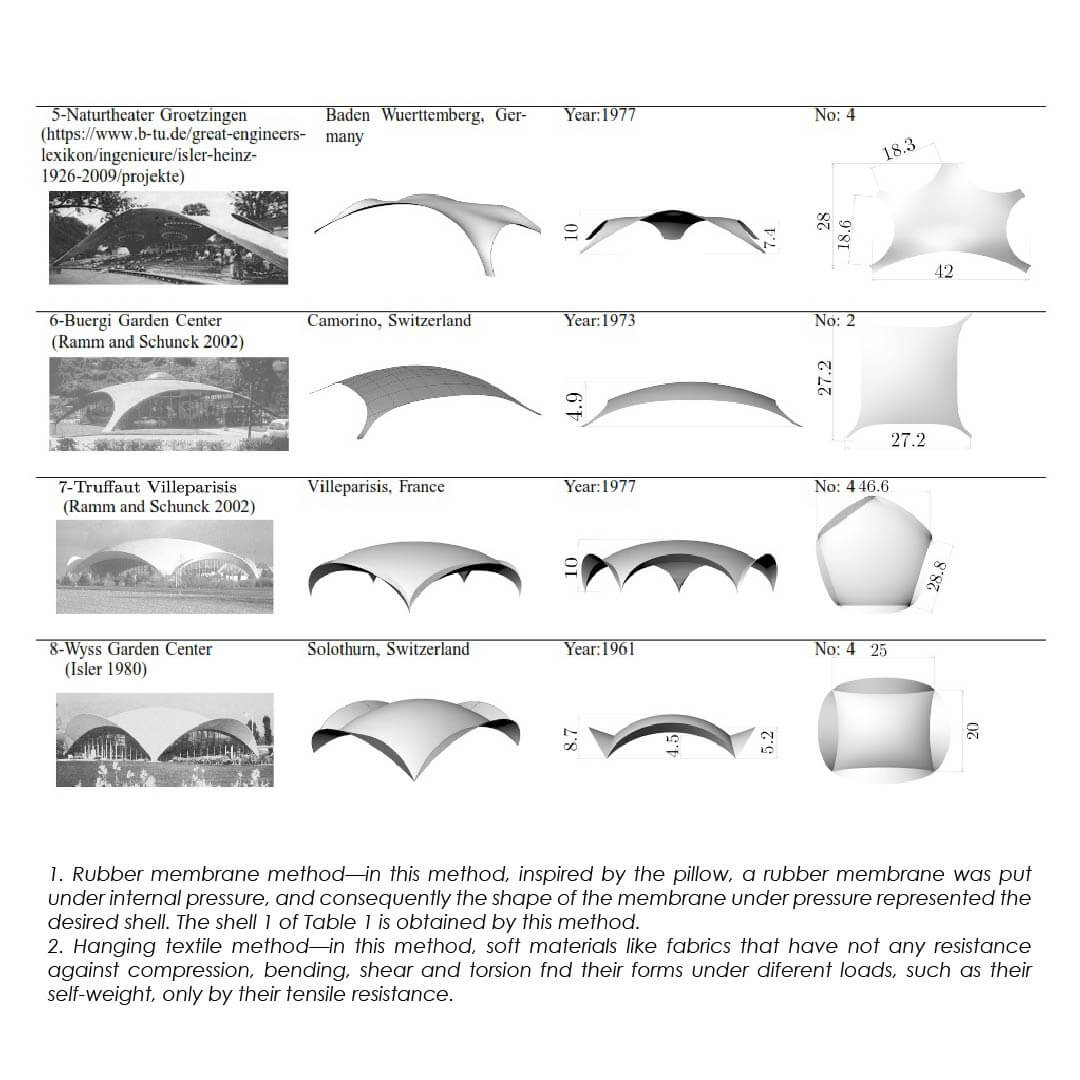 The essential properties of various forms of the shells and their differences in behavior were pinpointed and discussed within the calculations and the results were compared with the data of the genuine published references on Isler’s works.
The essential properties of various forms of the shells and their differences in behavior were pinpointed and discussed within the calculations and the results were compared with the data of the genuine published references on Isler’s works.
The internal forces, the amount of von Mises stresses, support reactions and the buckling loads of the shells are explored. The analyses revealed that, despite of their major membrane action, all the shells had negligible amount of bending moments, especially near the supports.
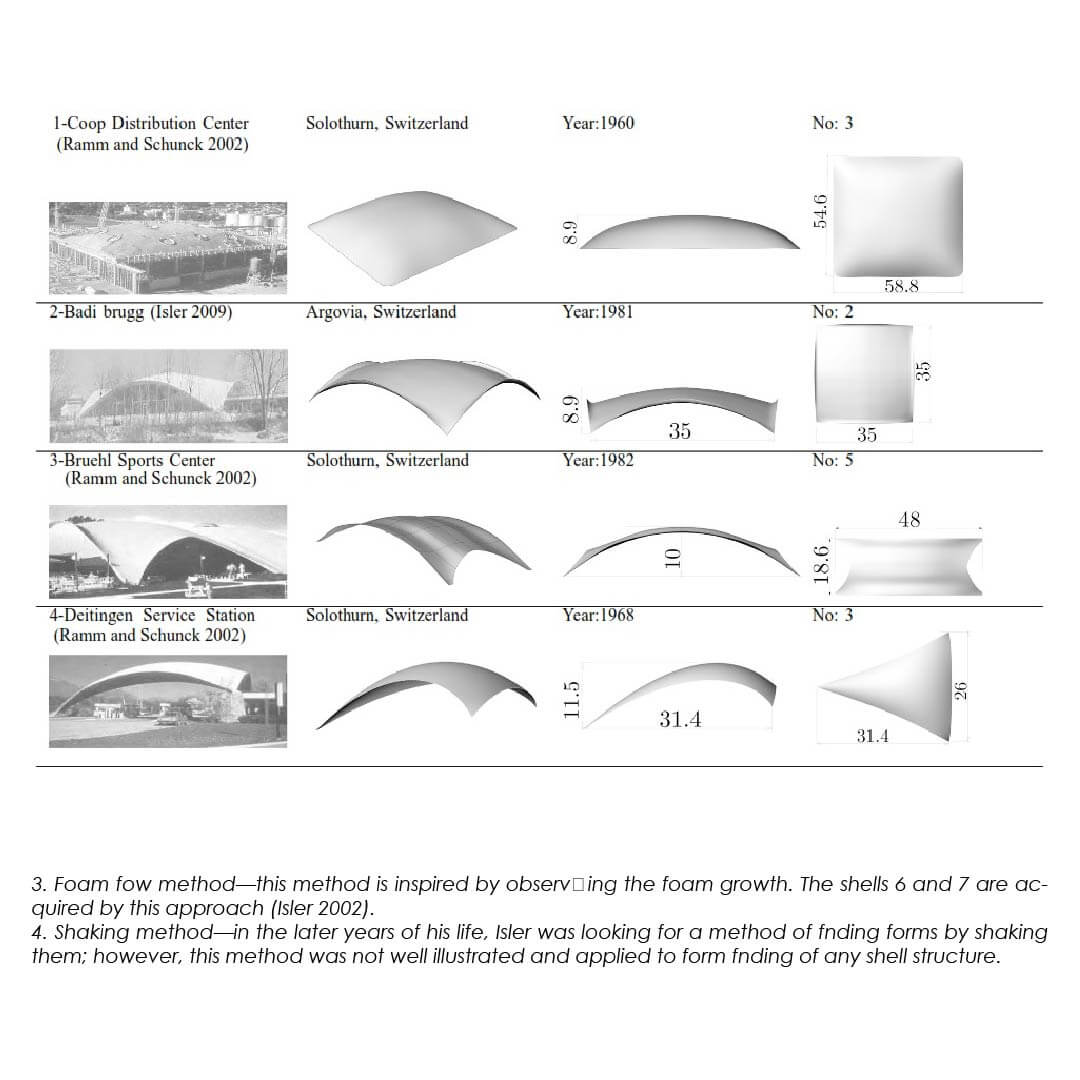 However, in general, all the shells exhibited an appropriate performance under the applied actions. But, at the same time, they exhibited different buckling behavior as a probable source of instability in them.
However, in general, all the shells exhibited an appropriate performance under the applied actions. But, at the same time, they exhibited different buckling behavior as a probable source of instability in them.
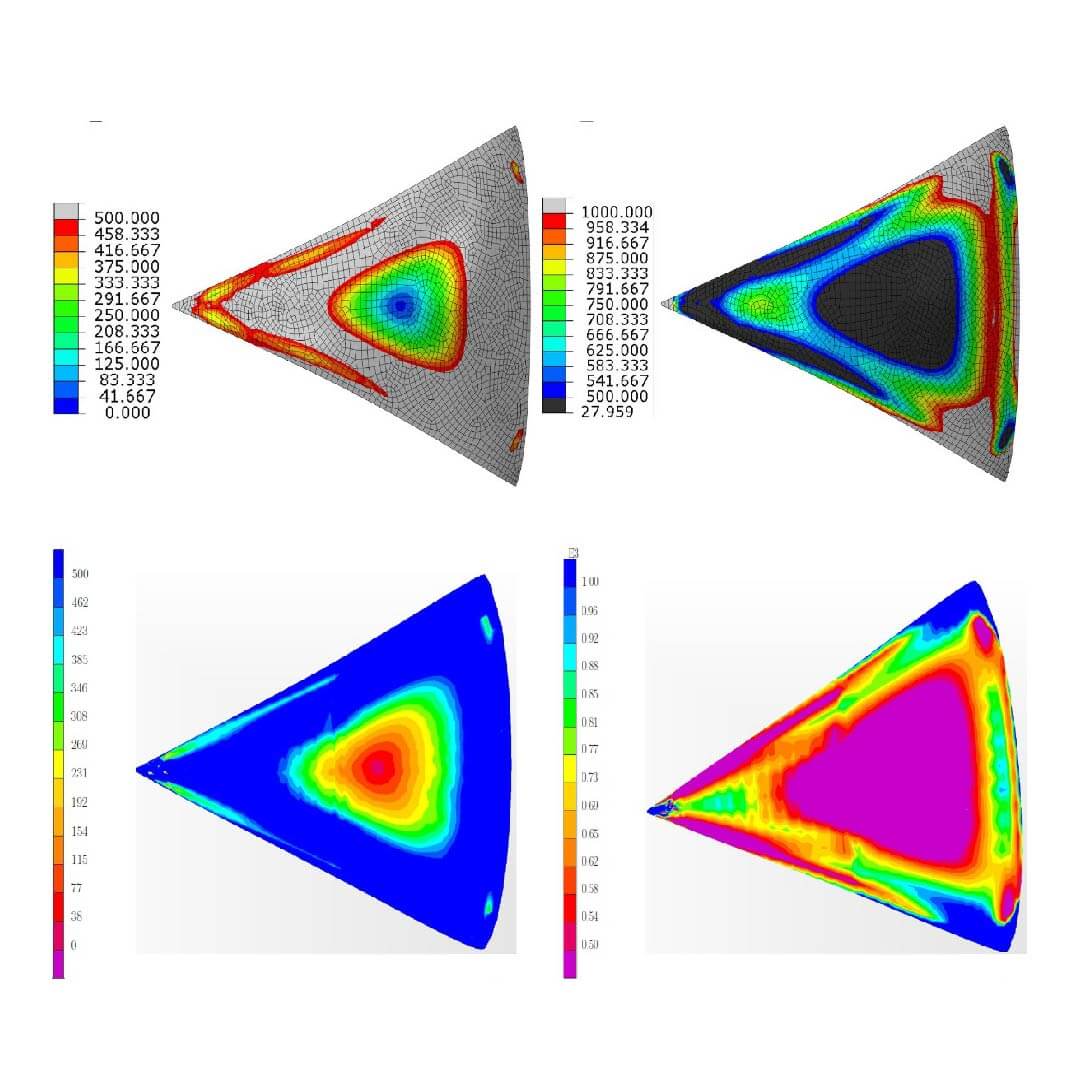 This paper has modelled and studied Isler’s eight shells in the finite element software, Abaqus, as a homogeneous section together with a composite layer to allow for assignment of re-bars of the reinforced concrete material.
This paper has modelled and studied Isler’s eight shells in the finite element software, Abaqus, as a homogeneous section together with a composite layer to allow for assignment of re-bars of the reinforced concrete material.
The Static General method of analysis was employed. The models have been evaluated without using Interaction modulus under their self-load.
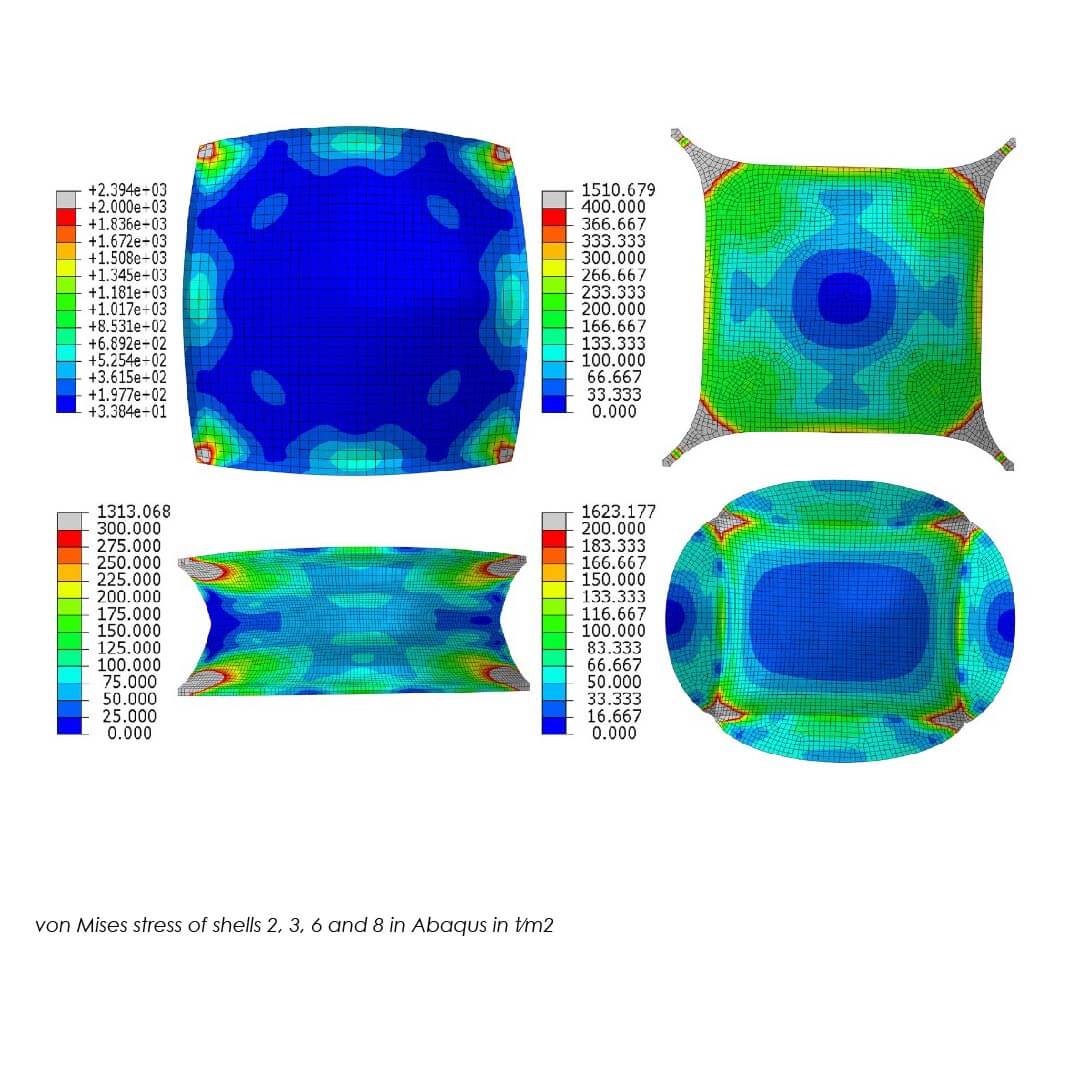 In parallel to Abaqus modelling, also, SAP2000 was used with the same linear material properties and definitions. The mechanical properties of the concrete material of Isler’s shell constructions are not identical and different references have mentioned different values for it.
In parallel to Abaqus modelling, also, SAP2000 was used with the same linear material properties and definitions. The mechanical properties of the concrete material of Isler’s shell constructions are not identical and different references have mentioned different values for it.
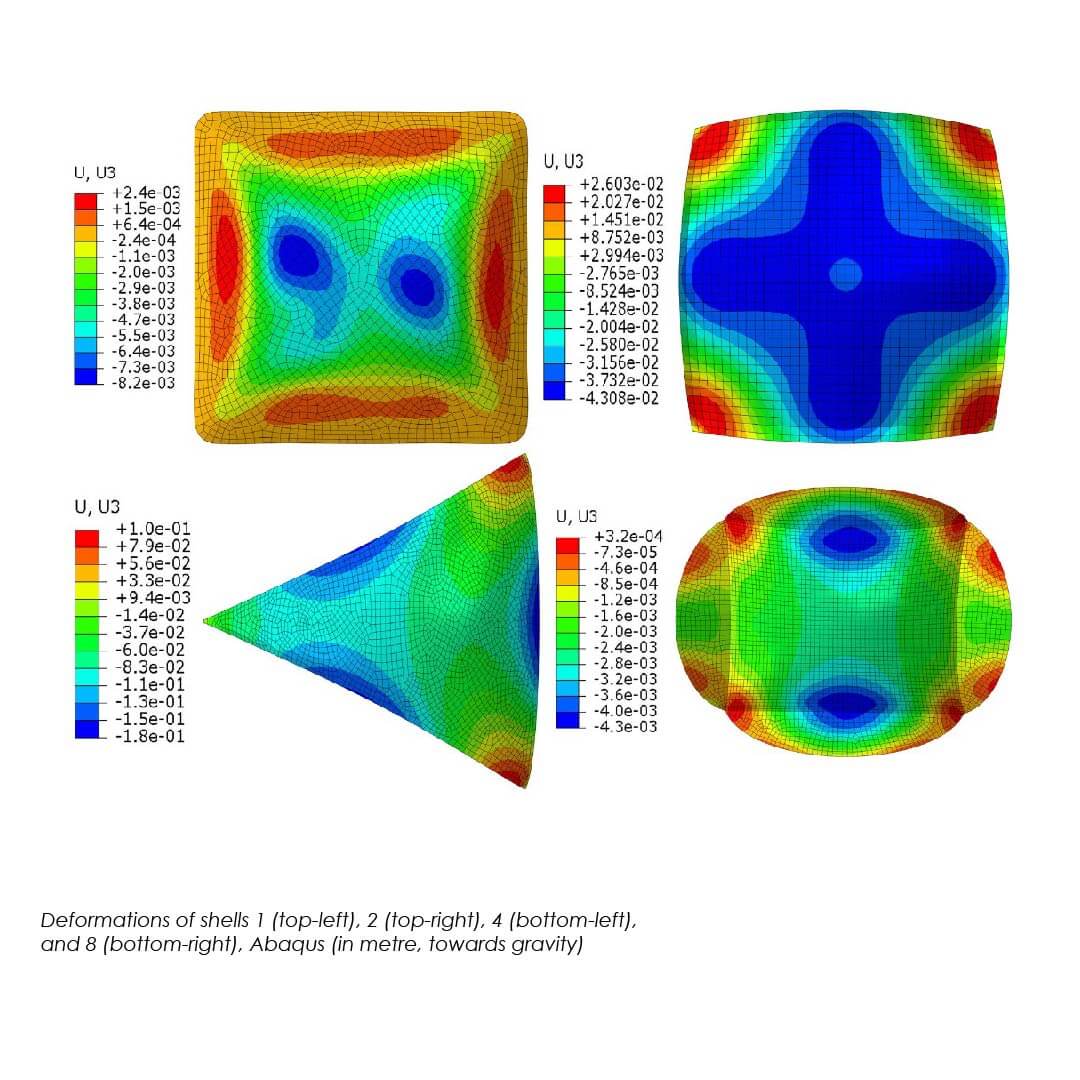 The typical concrete mixture of Isler’s shells constitutes of cement percentage of maximum (325 kg∕m3), gravel stone with a maximum dimension of (15 mm) (Christian and David 2012) for the concrete of 28 MPa (C-28) compression strength.
The typical concrete mixture of Isler’s shells constitutes of cement percentage of maximum (325 kg∕m3), gravel stone with a maximum dimension of (15 mm) (Christian and David 2012) for the concrete of 28 MPa (C-28) compression strength.
Since, the aim of this study is to compare the structural performance of various shells with each other, thus, in all of the shells, the same strength and material properties for concrete is assumed.




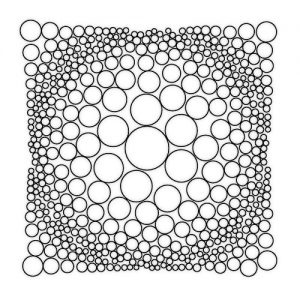























Comments